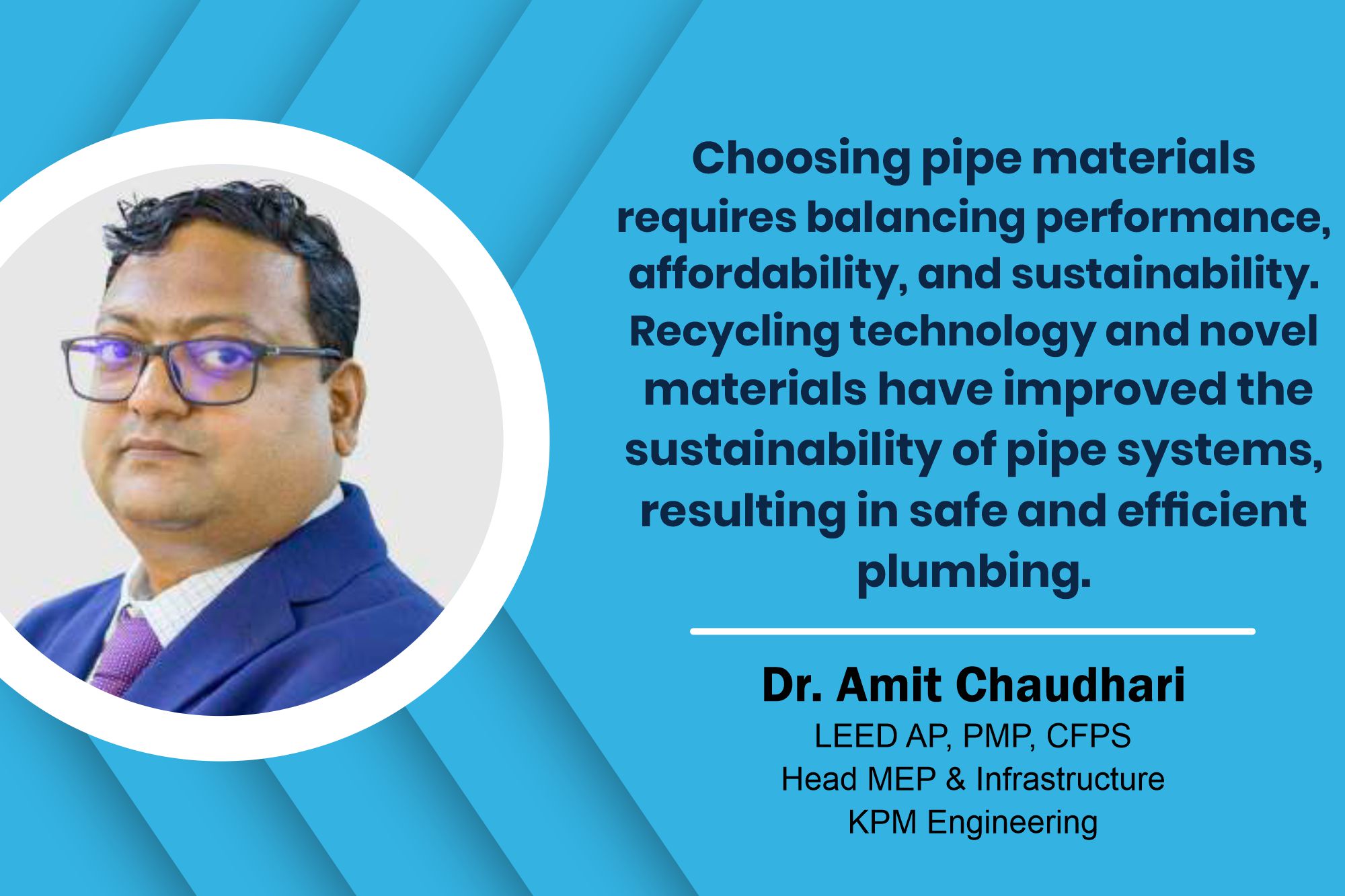This case study offers a detailed examination of the strategic decision-making process in choosing the ideal piping systems for various functions within a 40-story high-rise building.
This case study focuses on the construction of a 40-story residential high-rise building. The central challenge is selecting the most suitable piping materials for various building functions, considering pressure, temperature, durability, cost-effectiveness, and fire safety factors.
Challenges
The primary challenge lies in choosing piping materials that can efficiently handle the demands of a high-rise environment, including high pressure for water supply, temperature resilience for hot water, effective waste removal, and reliable fire safety measures.
Piping systems considered
- Potable water supply: Ensuring high water pressure delivery to all floors.
- Hot water supply: Pipes must withstand constant hot water flow and maintain temperature.
- Drainage system: Efficient waste removal to prevent backups, especially with many residents.
- Fire sprinkler system: Pipes need to handle high pressure during fire emergencies.
Pipe material options and considerations
- Stainless steel:
- Pros: Excellent corrosion resistance, high strength, and long lifespan.
- Cons: High cost, requires skilled labour for welding or flanged connections.
- Chlorinated polyvinyl chloride (CPVC):
- Pros: Cost-effective, good for hot and cold water, lightweight.
- Cons: Lower pressure rating compared to steel, limited UV resistance.
- Polypropylene (PP):
- Pros: Lightweight, cost-effective, good chemical resistance.
- Cons: Lower temperature rating than CPVC, may require specific joining techniques.
- Galvanized iron (GI):
- Pros: Affordable, good fire resistance, readily available.
- Cons: Prone to corrosion over time, requires re-galvanization for long-term use.
Selection process
For the building’s water supply, stainless steel, despite its high cost, is ideal for main risers due to its durability and corrosion resistance, making it suitable for a long-lasting infrastructure. CPVC pipes offer a more cost-effective solution for branch lines within floors, thanks to their ease of installation and capability to handle hot and cold water.
For hot water supply, CPVC is favoured due to its affordability, good temperature resistance, and ease of installation.
For the drainage system, PP pipes are chosen for their lightweight nature, making them easier to handle and install on higher floors, their chemical resistance, and their cost-effectiveness compared to metal alternatives.
The fire sprinkler system requires careful consideration of fire safety codes and performance during emergencies. Two potential options include:
- Galvanized iron (GI) pipes: Known for their strength, fire resistance, and high-pressure handling capabilities, though they are heavy and require skilled labour for installation.
- CPVC fire sprinkler system: Some building codes approve specifically designed CPVC systems, offering good fire resistance, lightweight properties, and easier installation than GI pipes. However, compliance with relevant fire safety codes and local approvals is essential.
Additional considerations
- Sustainability: PP and CPVC pipes are generally more environmentally friendly than stainless steel due to a lower production footprint.
- Noise reduction: PEX pipes can be an alternative for water supply lines if noise reduction is a priority, though they may not be suitable for high-rise applications due to limitations in pressure rating and fire resistance.
- Local building codes: Adherence to local building codes is crucial, as well as specifying approved pipe materials, fire resistance ratings, and installation practices for high-rise construction.
Sustainable perspectives
From a sustainability perspective, materials like copper, steel, and cast iron are highly recyclable, reducing environmental impact. Although PVC and HDPE are also recyclable, current infrastructure limitations make them less common. Pipes with longer lifespans, such as copper, cast iron, and concrete, conserve resources by reducing the need for frequent replacements. The production processes for steel, copper, and concrete are energy-intensive and generate significant emissions, but innovations in production processes and using recycled materials can mitigate some of these impacts. Materials like PEX and HDPE, which are easier to install and maintain, reduce the overall environmental impact by minimizing labour, transportation, and material waste. Health and safety considerations, such as releasing harmful chemicals from PVC and impacting water quality from lead in old pipes, are crucial for environmental and human health.
Conclusion
Choosing pipe materials involves balancing performance, cost, and sustainability. Advances in recycling technology, production processes, and innovative materials can enhance the sustainability of pipe systems. Combining different pipe materials is often the most effective solution for a high-rise building. Stainless steel is ideal for main water risers. CPVC is a cost-effective option for hot and cold-water branch lines and some fire sprinkler systems (depending on code approval). PP pipes are well-suited for drainage due to their lightweight nature and chemical resistance. Ductile iron is a strong option for fire sprinkler systems requiring high strength and fire resistance. Consulting with engineers, plumbers, and building code officials ensures a safe, efficient, and code-compliant plumbing system.
For more information, visit: http://www.kpm-engineering.com
Cookie Consent
We use cookies to personalize your experience. By continuing to visit this website you agree to our Terms & Conditions, Privacy Policy and Cookie Policy.

















